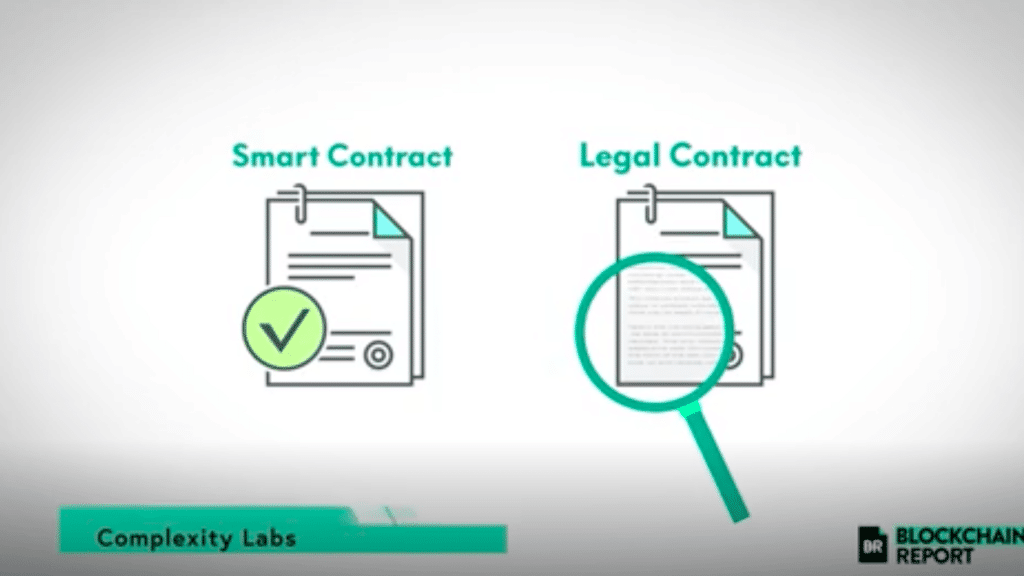Welcome to The Blockchain Report, your daily rundown for the latest in crypto with your host Taylor Nikolai. Today we’re gonna talk about Smart Contracts.
You’ve probably heard the term “smart contract” before, this video is meant to help give an introduction to what they are, diving into the various smart contract platforms that exist today. In this video we’re going to go over smart contract platforms.
The smart contract platforms that I will be focusing on in this article will be Ethereum, NEO, Stellar, and Hyperledger Fabric. We’re gonna show you each of the platforms’ benefits and drawbacks and how they compare with Ethereum.
First, let’s go over WHAT a smart contract is.
In essence, a smart contract is a self-executing digital contract. The idea behind a smart contract is that you’d be able to take a regular contract, convert it into a readable format that a computer can understand, and the computer would be able to automatically enforce the smart contract based on the various parameters and rules set out in the contract. Smart contracts allow us to no longer rely on lawyers to execute and enforce contracts. Instead, we rely on the computer code to enforce the contract.
Why are smart contracts beneficial?
Smart contracts allow you to exchange anything of value in a completely transparent manner. They remove the need for middlemen to enforce the contract and exchange.
ADVERTISEMENT
We still don’t know the full extent to how smart contracts can be used, in the same way that it would be nearly impossible in 1998 to know the full extent of how people would use the internet. One of the most prominent use-cases of smart contracts is doing a crowdsale, more commonly known as an Initial Coin Offering (ICO).
In an ICO, people can contribute to the development of a protocol and platform for a token. In exchange, people who contribute to the ICO will receive some amount of tokens in proportion to the amount of money that they contributed. ICOs are a massive use-case for smart contracts, as several projects have raised over hundreds of millions of dollars.
Now we’re gonna go over some specific smart contract platforms.
Ethereum is probably the best known smart contract platform today. Ethereum was created by Vitalik Buterin when he first wrote the whitepaper for the project in 2013. Since then, Ethereum has become the de facto platform for blockchain and smart contract developers to use for ICOs and other projects.
Let’s go over some of the projects being built using Ethereum
There are too many projects being built using the Ethereum platform to count, but let’s focus on some of the better known projects. One prominent project that is using an Ethereum-based token is OmiseGo. The motto of OmiseGo is to “bank the unbanked” — i.e. provide financial services to people who would normally have difficulty accessing them.
ADVERTISEMENT
Another prominent project built on top of the Ethereum platform is Augur, which aims to create the first ever decentralized prediction market.
What are the advantages of Ethereum?
The main advantage of Ethereum is that it is the most popular smart contract platform that is being used today. That means that it has a significant amount of support around the project, and it’s easy to find video and text tutorials on how to develop with Ethereum.
Furthermore, smart contract and blockchain developers will probably be most acquainted with solidity (the programming language that Ethereum uses), so they won’t have to spend extra time learning a new programming language of a different platform.
What about the downsides?
First off, Ethereum is slower than other smart contract platforms. It takes an average of about 3.5 minutes for a transaction to go through. Furthermore, it costs a certain amount of Ethereum to do transactions on the network. Performing large amounts of transactions can get very costly. Again, other smart contract platforms have created solutions for this issue.
NEO is a smart contract platform that has sometimes been referred to as the Ethereum of China. This is because NEO was the first smart contract platform launched in China. NEO was created and developed by Da Hongfei. NEO was originally launched in 2014 as Antshares before rebranding to the name NEO in 2017.
So what are some projects being built using NEO?
One prominent project that is being built using NEO is NEX. NEX aims to be a decentralized exchange that will enable trades across multiple blockchains such as NEO and Ethereum.
Clip: At 2:49 https://www.youtube.com/watch?v=h5doBX_32jQ
Another prominent project that is is Moonlight.
Moonlight is a talent matching platform that will match workers with employers using an algorithm built into a smart contract. Okay, so what are some of the advantages of using NEO?
Clip: Text on screen: Advantages of NEO
NEO has several advantages over Ethereum. First, there is more potential for adoption on a massive scale in China. This is because of the presence and relationships that NEO has already established in China. Secondly, with NEO you have the ability to write smart contracts in a variety of different programming languages. This is because smart contracts written on NEO compile to an intermediary Microsoft language.
Okay so what are the downsides to NEO? It costs 500 GAS to deploy a complete smart contract, which is about $15,000 right now. Some people view this as a way to reduce spam on the NEO blockchain and to prevent low-cost scams from taking place. Others view this as reducing the number of developers that can build using NEO because it is so costly.
Secondly, technical support for NEO is small compared to Ethereum. It’ll be much easier to find solutions to common technical problems for Ethereum as opposed to NEO. And lastly, NEO cannot be split. That means it is impossible to own 0.1 NEO. This could be another barrier to entry if NEO ever becomes more expensive due to a rise in value.
For more discussion of further Smart Contracts, check out the video above, and follow us on Instagram at @BlockChainReport.









